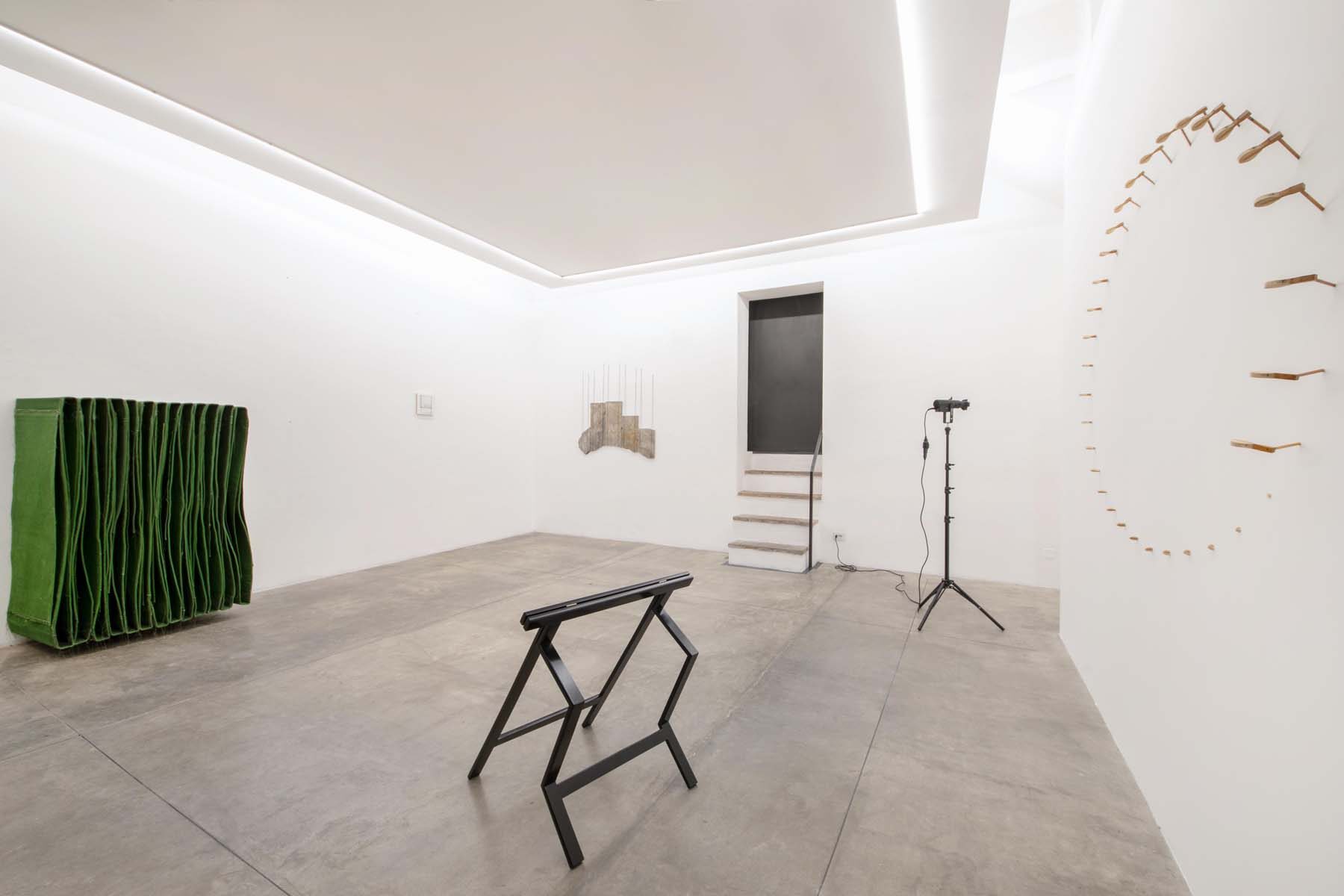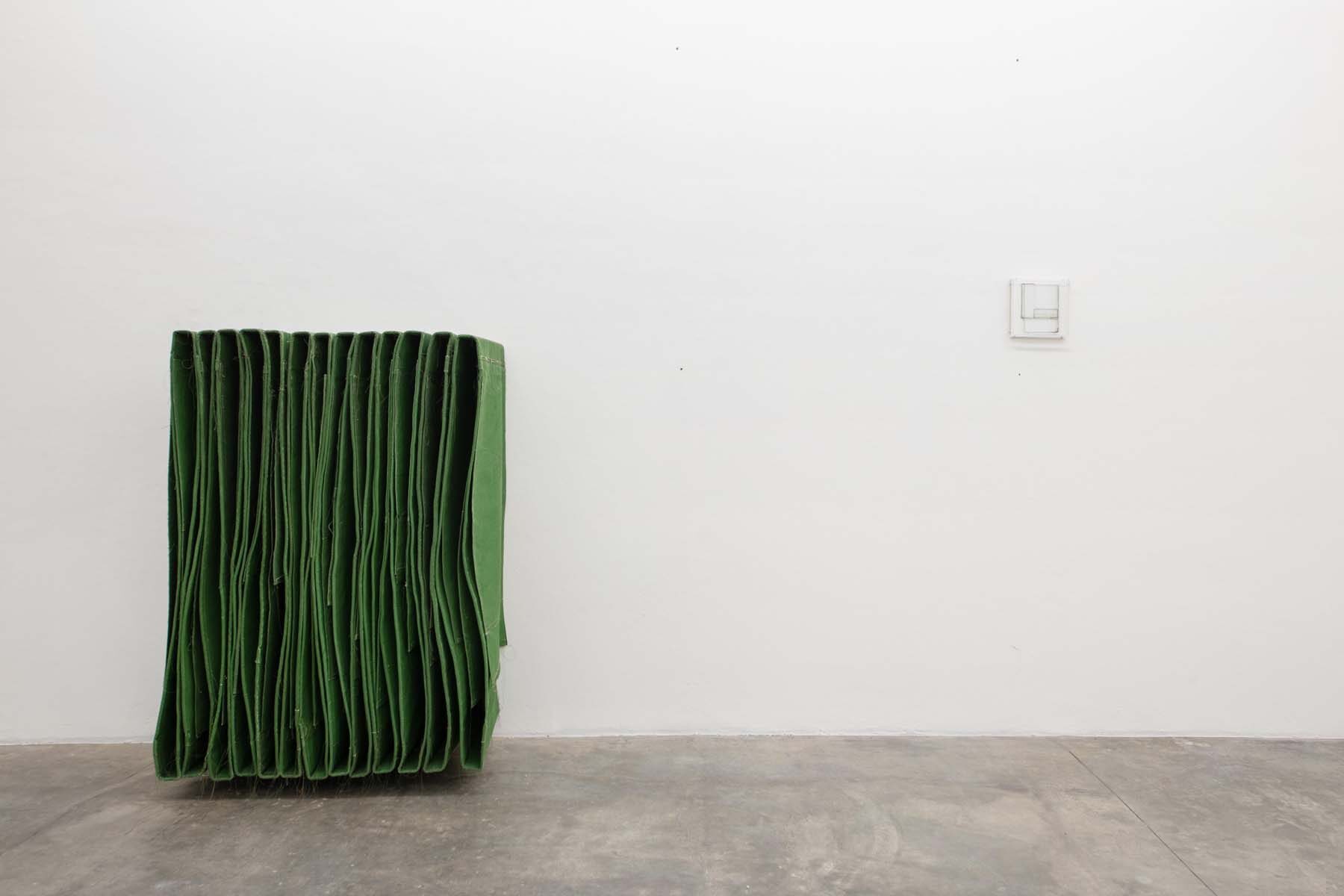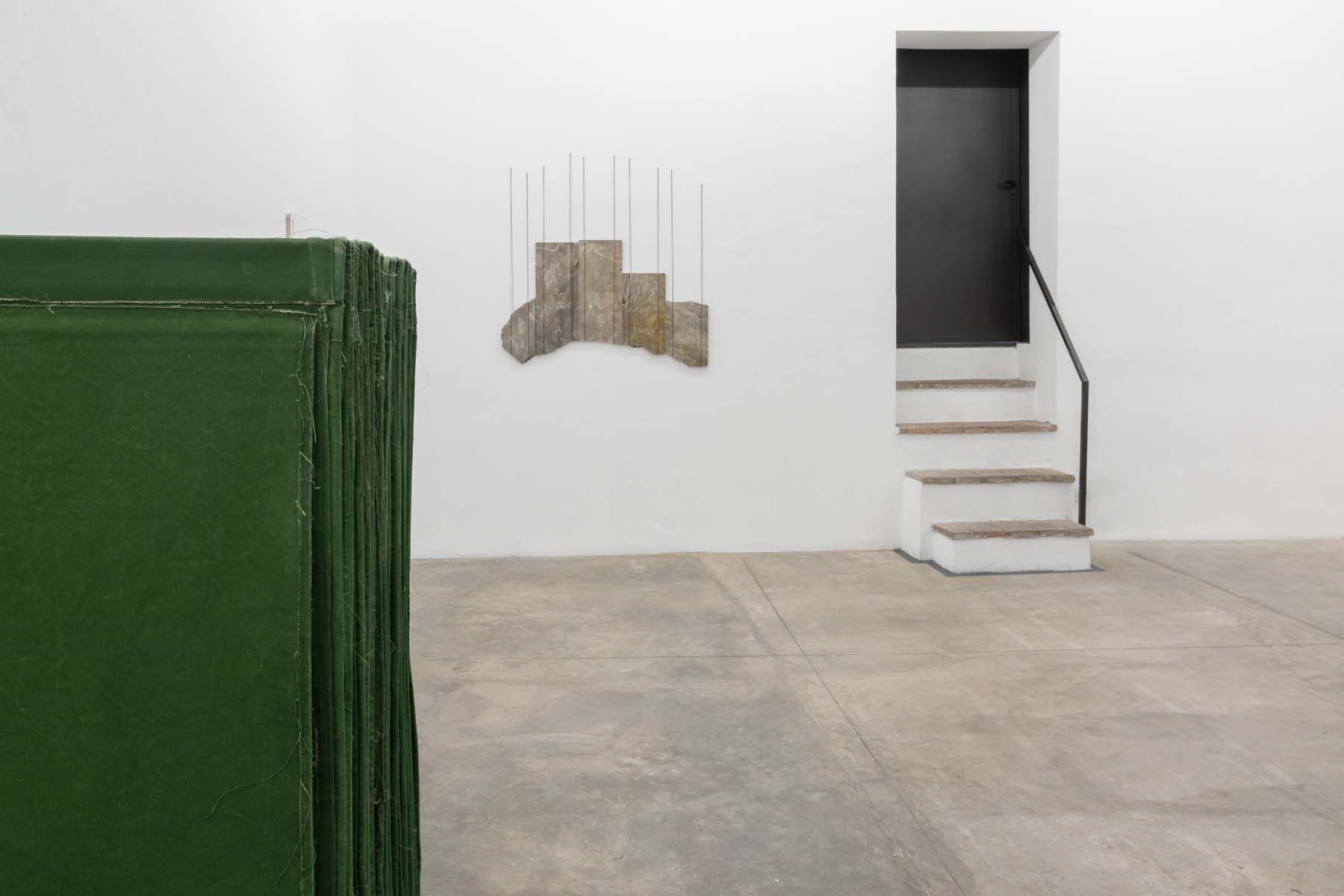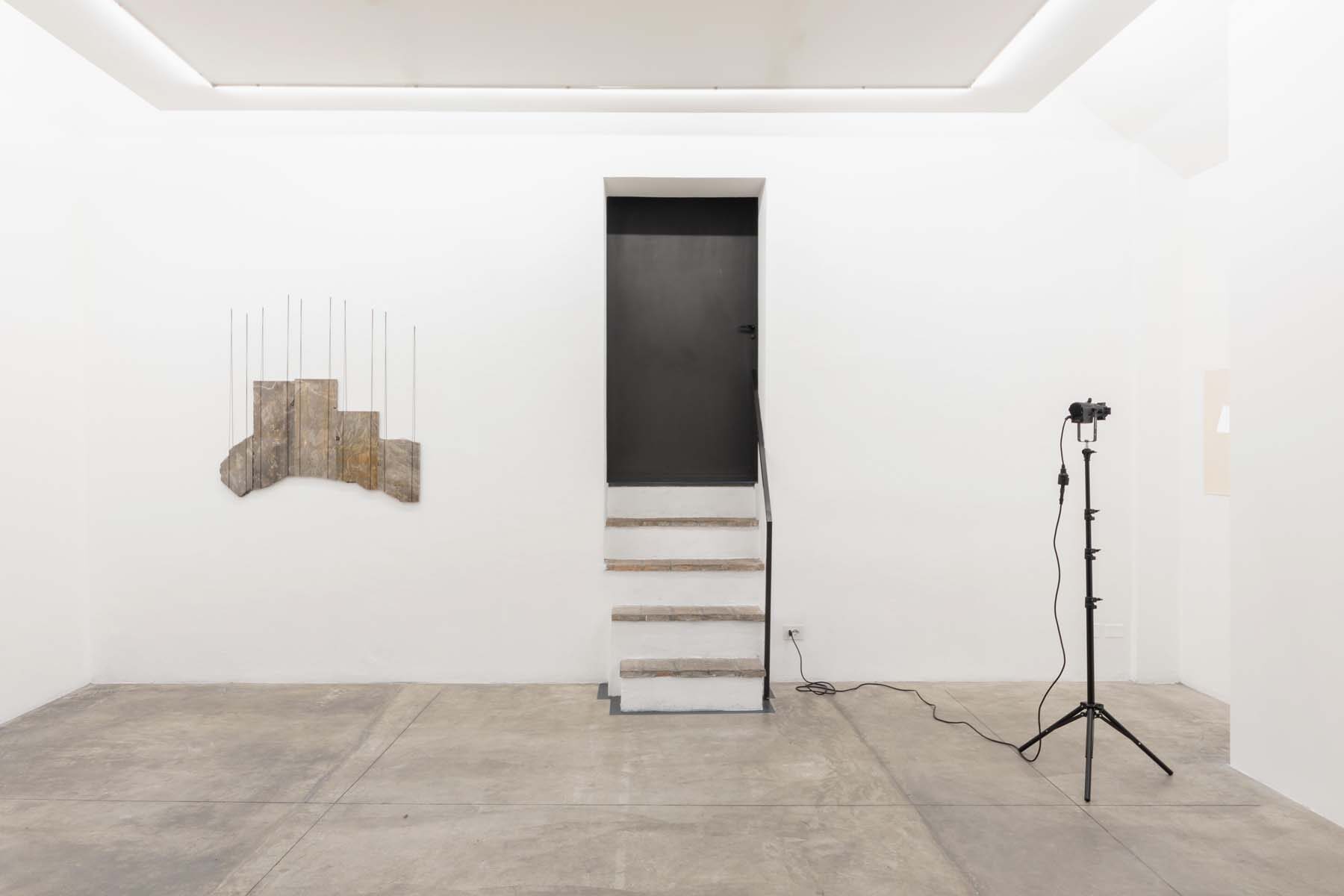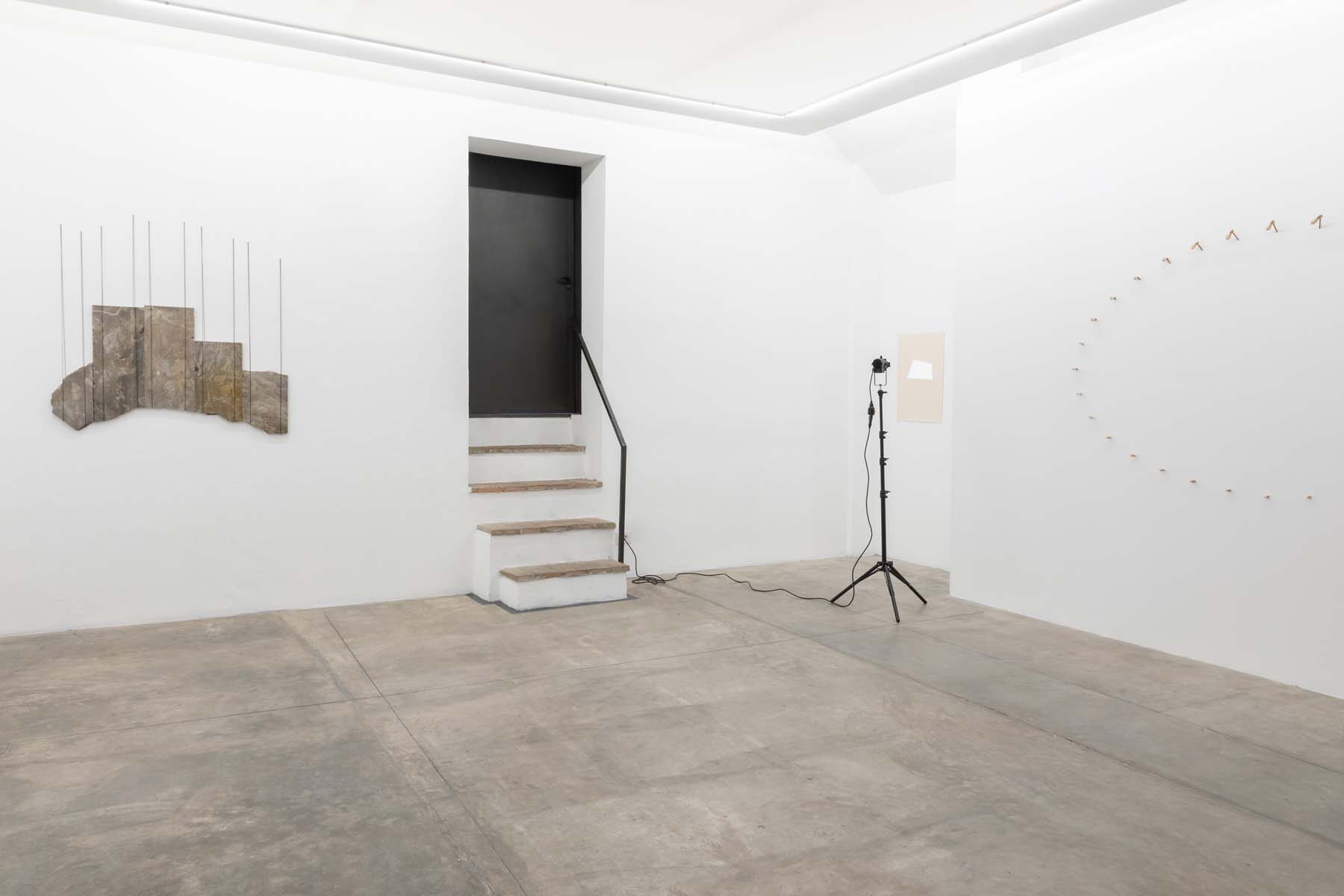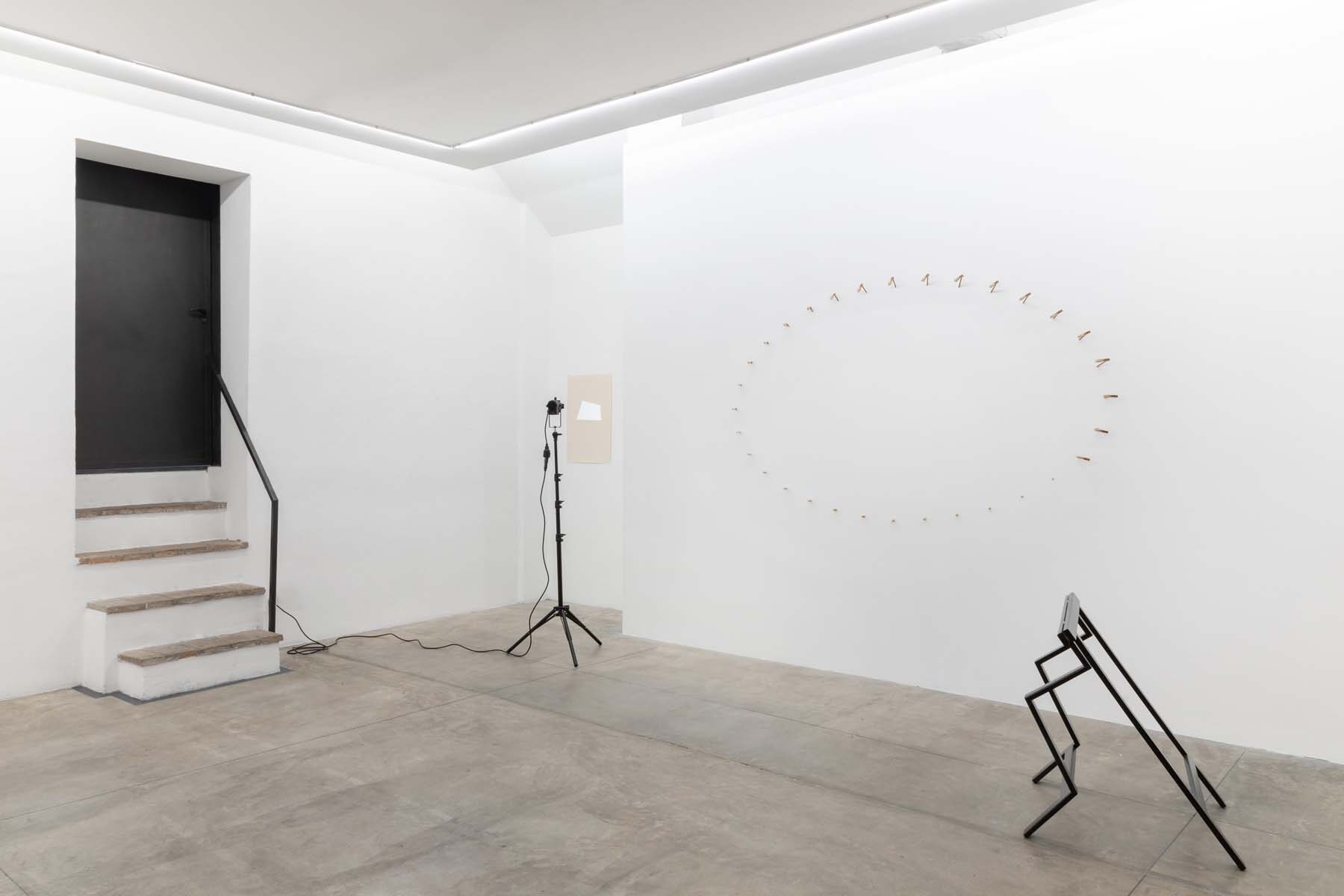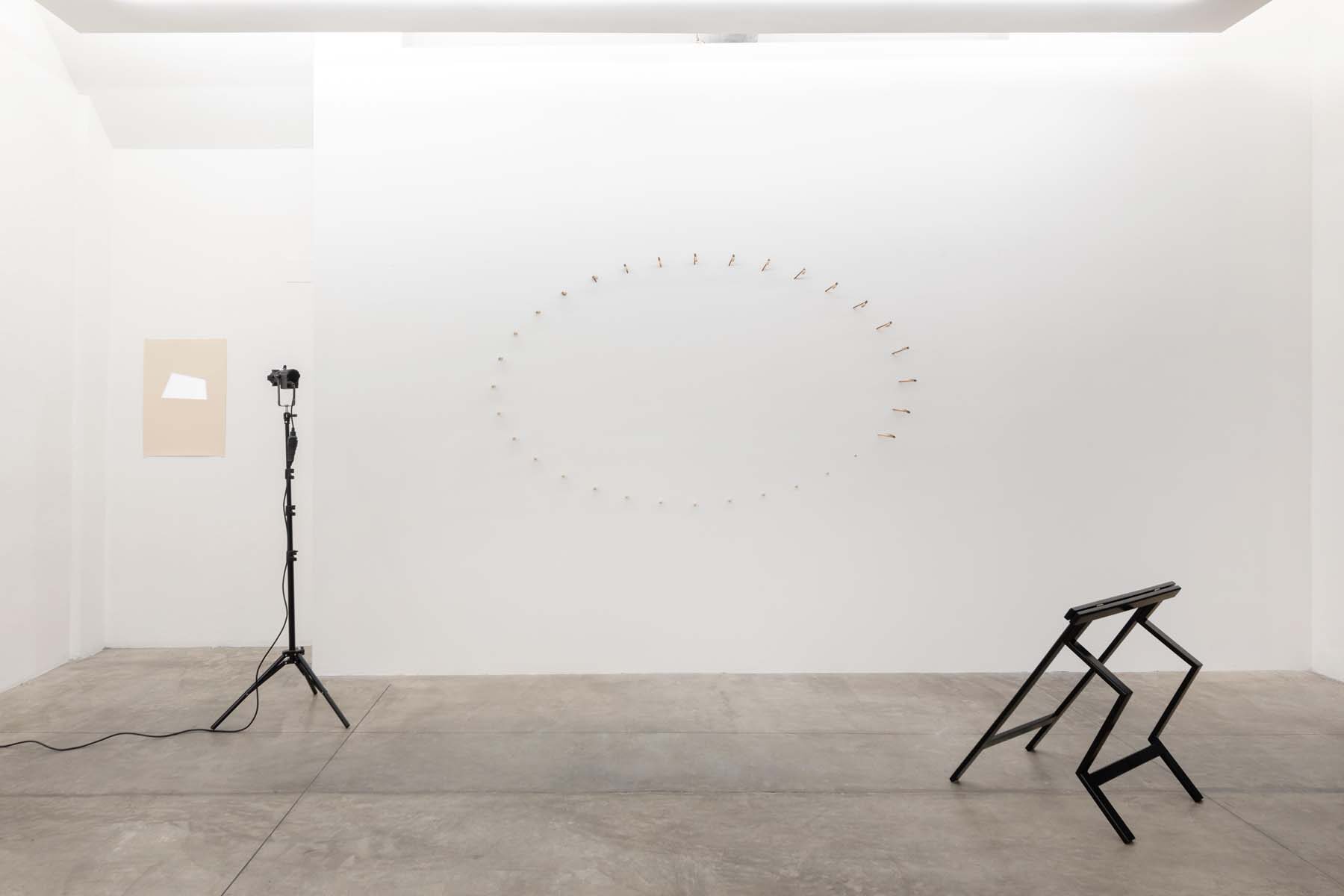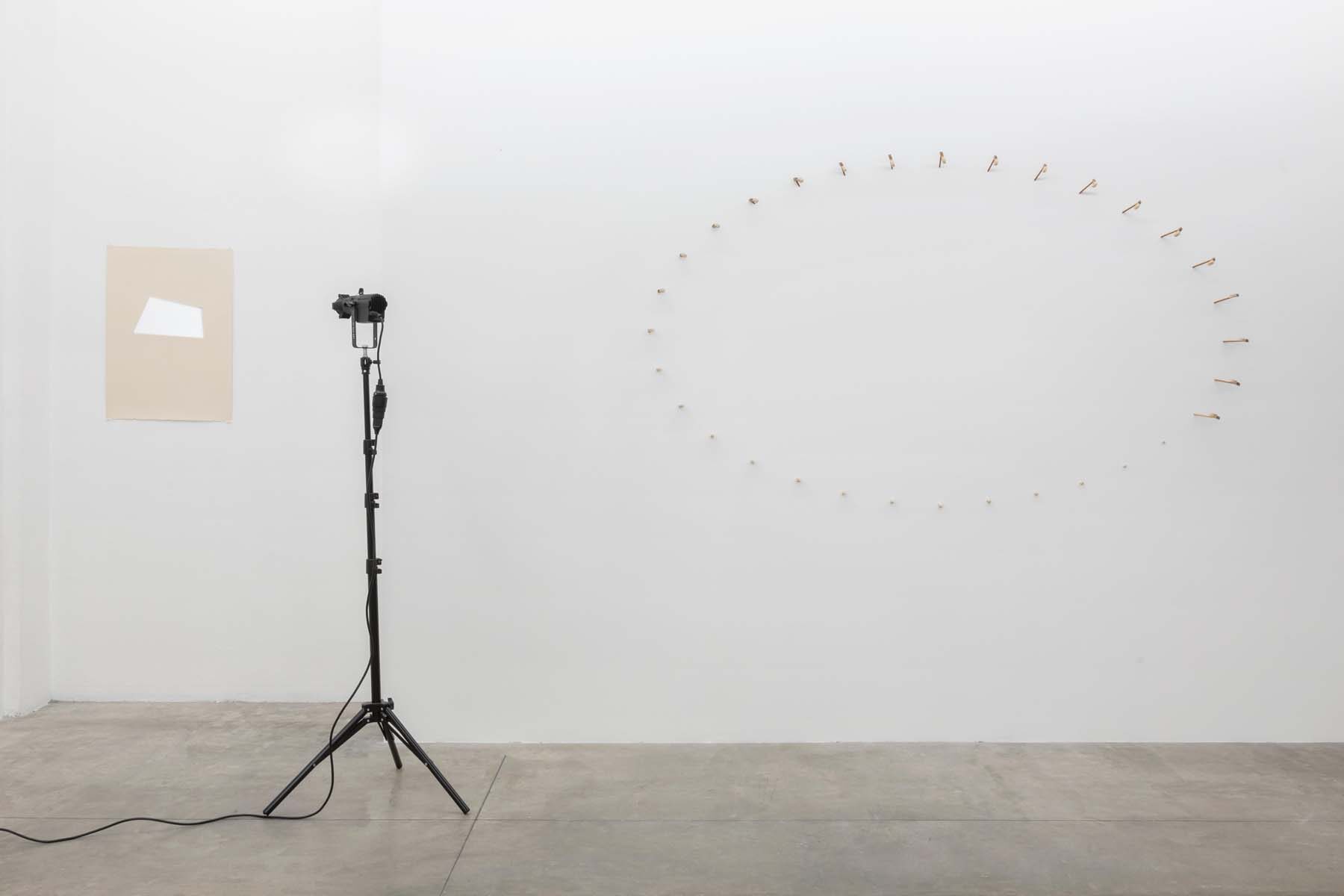Space as a duty of care
Simon Callery, Anneke Eussen, Jacopo Mazzonelli, Goran Petercol, Silvia Stefani
Studio G7, Bologna (I)
April ― September 2023
Observations on what surrounds us
Daniele Capra
1
The word “space” comes from the Latin noun spatium, which, in turn, is close to the verb patere, which means “to be open”, and the Sanskrit root spa-, with the sense of “extend” and “grow”. This word inevitably has in itself the sense of expansion, enlargement or extension, therefore closely connected to the idea of what is not limited and not endowed with boundaries. Space is, therefore, abstractly a generic place, undefined and of infinitely vast, in which humans, animals, plants, things, objects, rocks, seas can find their place. It is, in essence, all that exists with a three-dimensional shape and extension. In ancient times, geometry was conceived precisely from the need to measure, to give a topological location, dimensionally and qualitatively compare everything that occupies a section of space. Plastic art, on the other hand, has investigated space through different methods of restitution by adopting symbolic, ideal, imitative and functional forms, whose foundations have only been questioned in the past century.
2
We are immersed in space, whatever the idea we have of it. Everything around us is space, the void between us and the objects we see, “swallowed up in the infinite immensity of spaces of which I know nothing and which knows nothing of me” (Pascal, Pensée, 64). Space is abstractly the place of the visible and of phenomena, but we need to tame it and live it in order to own it in its most infinitesimal variations. Although we are aware that space is infinite, we are used to perceiving and reading it only through the finite elements that inhabit it, since they are easily decodable. Our own body, which contains our organs and our thoughts, and the volume of everything that exists that is simply other than us, are a closed and limited space. Instead, what we find in the middle is free and open space: it is that invisible, compressible and infinite sponge that we realise it exists, and we adapt to our most diverse human needs – even if they define our finiteness, it is in fact the necessary connective tissue between us and all that exists.
3
In Anglo-Saxon common law the duty of care is a principle that provides for the responsibility to take care of what happens to someone or something. It represents the obligation to care for people, objects and places, and it embodies the respect for existing things. At the same time, the idea represents the natural and direct involvement of people in situations and contexts: it is a form of active participation in what is common, in which individuals take responsibility for behaving respectfully towards the environment surrounding them. Duty of care implies a focus to the community, its history, the artefacts it has created, the environments it has shaped, the laws and values that hold it together. It is a notion opposed to idea od “homo homini lupus” and shows a thought that implicitly recognizes that the individual is part of a community, which is itself a positive thing. Furthermore, this principle is a real assumption of individual responsibility as a preventive attention. As a member of a community, in fact, I am required ex ante to take care of others, and not only to respond ex post to any damages that may derive from my actions: the individual has a moral obligation to pay vigilant attention.
4
The creation of a work is an addition to everything that pre-exists. Almost all artists feel the natural need to enrich the world through their expressive activities, concretely producing a new work, non-existent before. In this way, an addendum comes into play to the sum of infinite addends that are already part of the world; with their work, the artists not only trivially increase the number of objects manufactured by humans, but also the interpretative possibilities connected to reality and to our human condition. Moreover, it is essential to understand that if artists generally produce works, only good artists produce conscious and necessary works throughout their lives (of course, all evaluation has wide margins of subjectivity, but this does not invalidate the principle). A necessary work, whatever is the reasons that generated it, is in itself an action of responsibility towards the world. If this were not the case, we would simply have to consider it as an ordinary and conventional artefact, with scarce and significant functions, since it does not respond to others, to the community, but only to its own needs. A necessary work, on the other hand, continues to generate in us the questions stemming from its creation. In other words, it continues to question us, like an impudent boy thirsty for knowledge.
5
The sense of responsibility of a work can derive from various factors: the reflections at the foundations of its creation, its language, the process that produced it, the materials and methods with which it materialised, as well as its own ability to communicate. Regardless of the combination of these elements, its power lies in its being a presence of instability or discontinuity with respect to the structure of the ordinary. In fact, responsibility also has to do with a very subtle form of unpredictability: what is ontologically new cannot be considered as simple displaced content. It must feel like something that we did not know before, that had not manifested itself or that was not detectable (and of course the innovation cannot itself be the only content).
6
The show space as a duty of care brings together three-dimensional works by Simon Callery, Anneke Eussen, Jacopo Mazzonelli, Goran Petercol and Silvia Stefani, whose research can be read as a repeated act of responsibility towards space and an act of attention to what could happen within it. In the practices of the five artists, although characterized by different genesis and methodologies, the duty of care principle shows how space can be the place of the possible, of rigour and care. The works – connected by their tension towards the formal and conceptual analysis of space – are actions of awareness towards the three dimensions in relation to materiality, volume, order, surface, structure and the physical boundary of the materials.
7
If space is, by its own nature, abstract and generic, the interest, care and sense of responsibility of the artist is not meant to transform it into a subject in itself, but rather a playing field in which to measure one’s research. It is a place where you can experiment, as an apparently unlimited extension of your research, where you can put forward your doubts or test your grammars. In this way the investigation becomes a boundless environment to be shared with the observer. Space is the place of verification, of perpetual questioning.
8
The research of Simon Callery originates from the analysis of the landscape, whose presence is evoked through the materiality of painting. In his works, the landscape becomes a volume, a space made of fabric condensing the experience of vision into a minimal form with recurring elements. His works are a sort of anomalous visual mold recomposed through a three-dimensional form. The artist is not limited to the “emotion recollected in tranquillity” mentioned by Wordsworth, but he translates the vision into further space, in an absolute, poetic and silent form of expression.
9
The works of Anneke Eussen are often created with waste materials coming from a given context and then recombined without any connection to their original functions. In this way, the artist attributes a new order to the objects, now acquiring a new semantics and an unexpected visual rhythm. In her process, Eussen rediscovers a place and dignity for what was abandoned and marginal matter destined not to be seen. Her aim is to bring back the attention to what we would never considered, enabling the total reversal of the fate of material things.
10
The works of Jacopo Mazzonelli (1983, Trento) investigate aspects related to music, sound and memory through absence, alluding to instrumental practice, memory and the marks that time leaves on objects. His works are a deliberate act of abstention from the world, in which the tension results from the rigour of silence and the spasm of waiting. The observer imagines the sound, measures the intensity of the touch or the distance between years, in a condition of suspension. It is a performing orchestra, with the director who is leading, but no music emerges, forcing the viewer to imagine and listen with the eyes.
11
The radical synthesis of concepts is one of the core elements in Goran Petercol’s poetics, whose fields of investigation range from semiology to the formal aspects of artistic creations. With a clear and essential language, he investigates the grammar of things, light, shadow and the topological possibilities triggered by objects, which in his hands turn into open questions addressed to the observer. Summarising every aspect with rigorous logic, Petercol investigates the conceptual structures of reality, the elements that compose it, thus revealing the invisible part of the visible.
12
The body and the posture are the founding elements of Silvia Stefani’s works, whose art explores dynamics of tension and the physical boundaries of materials. Her works, often shaped according to dimensions of the human body, are endowed with a strong visual and psychological importance, originating from the continuous alternation of straight lines, broken segments and open angles. The sculptures are characterised by an uncommon physiology, in which functional structural elements alternate with parts that respond to a purely expressive logic. The titles of his works evoke the opposing conditions of freedom and constraint, of weakness and strength, which find a possible and risky balance in their materialisation.
